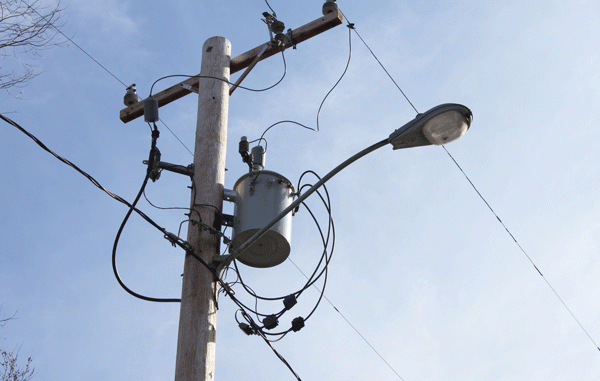
Governor Andrew Cuomo’s Excutive Order 88 (EO88), part of his Build Smart NY program, demands a 20 percent reduction in energy usage by April of 2020 in all state government facilities, including colleges in the State University of New York (SUNY) system. According to Vice President of Facilities Management John Shupe, SUNY New Paltz is well on its way to meeting and even exceeding this mark.
“We are ahead of many SUNY campuses as far as sustainability and energy management,” he said.
New Paltz was one of the first four SUNY schools to submit a preliminary master plan to the New York Power Authority (NYPA) and now announces the completion of its Final Energy Master Plan Report. This report is available on the school’s sustainability website.
Facilities Management and the Office of Campus Sustainability worked with the NYPA and an energy management consultancy firm called The Weidt Group to conduct a full energy audit for all of the buildings across campus.
“All that data shows us exactly how much energy any building on campus uses at any point in time and gives us immediate feedback telling us how our energy conservation methods are going,” said Sustainability Coordinator Lisa Mitten.
EO88 requires submetering of large buildings for electricity, something SUNY New Paltz had done prior to the initiative. Because the college had already submetered all the buildings on campus larger than 2000 square feet. for electricity, the auditors had an easier time recording precise energy use measurements.
“You can’t tell if you’re doing something well or not if you’re not measuring it,” Shupe said. “It’s like you don’t know if you’re learning without a test.”
One example in which this data was put to use was when it showed that Crispell Hall was using more electricity over the summer than the other buildings in the complex. It was discovered that the ventilation system, which had been put in place during the most recent renovation, was running even though there was no one occupying the building. From then on, the system only ran for approximately 30 minutes, once or twice a day just to move air throughout the building.
According to Shupe, the campus’ energy conservation success depends largely on intelligent management and data analysis.
“The premise of EO88 is low and no-cost initiatives to reduce energy usage,” Shupe said. “There have been other Executive Orders but they really didn’t have any teeth, EO88 has some teeth.”
One part of the reduction strategy is a more effective scheduling of classes in order to shut down buildings not in use at an earlier time. Also, 70 percent of the campus’ exterior lighting has been upgraded to LED lighting with the remaining 30 percent to be switched over this summer.
According to a survey conducted by Mitten, many of the students living in the Parker complex reported that their residence hall was too hot during the winter. She discovered that the thermostat for these buildings was typically reading around seven degrees colder than the actual temperature outside, thus signaling for too much heat. SUNY New Paltz is currently pursuing grant funding to retro-commission these buildings.
Additionally, there are plans in place to improve the insulation of piping systems in buildings across campus to reduce the energy of heating water and indoor spaces.
“All the piping in the buildings across campus lose a lot of heat because they are not insulated, this wraps blankets around them to prevent loss,” Mitten said.
According to Shupe, the school is working to commit a recently-allocated grant to bring more solar power to campus.
There are many ways students can help, simply by doing the things we were most likely taught at home. Turn off the lights when you leave a room, remember to turn electronics off or put them into sleep mode when not in use and keep windows closed as much as possible when the building is being heated.
For more information about energy reduction efforts at SUNY New Paltz, visit the Office of Campus Sustainability’s website. More information about EO88 is available on Gov. Cuomo’s website.
